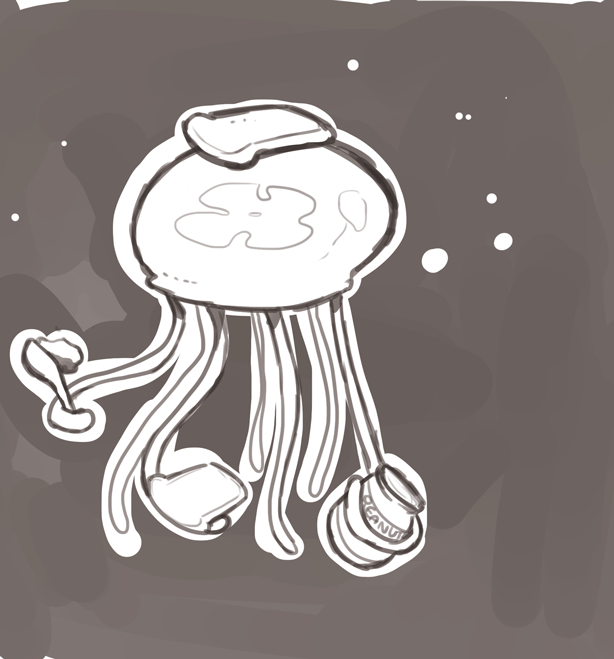By Taylor Breckles (The Cascade) – Email
Print Edition: February 26, 2014

The first ever food-animal hybrid was created on a whim.
Jellyfish are appreciated world-wide because of their unique appearance and ability to swim so effortlessly. There’s one aspect of their lives, however, that has become a great nuisance to keepers: their need for food.
Every organism needs food — or energy, to be more scientifically accurate — but feeding jellyfish in captivity has become inconvenient because of their food selection. Fish and shrimp-based protein are the foods of choice for the jellyfish, but their sources can be rather expensive as well as unsustainable.
The solution? Peanut butter. It’s cheap, readily available, and sustainable.
“We herein report on what we believe to be the first known unholy amalgamation of America’s favourite lunchtime treat and live cnidarians,” say Dallas Zoo aquarist P. Zelda Montoya and aquarium supervisor Barrett L. Christie in the Drum and Croaker: A Highly Irregular Journal for the Public Aquarist.
One group of 250 young moon jellyfish were fed a mixture of salt water and creamy peanut butter twice a day for five weeks. This mixture contained three tablespoons of creamy, protein-rich, additive-free peanut butter and 10 ounces of seawater, and it was added to the jellies’ tank. According to the scientists, the jellyfish loved it.
“Throughout this period, it was noted that jellies that had recently fed displayed a distinct brownish hue owning to their high degree of peanutbutterocity,” the scientific report stated. These jellies also increased in size, thanks to the high fat content of the peanut butter, when compared to the fish that ate more ordinary foods.
“We would love to claim we conducted this trial with noble purpose, but the truth is that we just wanted to make peanut butter and jellyfish simply to see if it could be done,” say the aquarists, “whether or not it should be done is a question no doubt to be debated by philosophers for the ages (or at least by some aquarists over beers).”
Although the scientists admit that this experiment was whimsical and somewhat ridiculous, it did have a purpose. It proved there can be unconventional methods to sustain aquatic creatures, or that they are at least worth a try.
“This whimsical exercise is not that far from serious aquacultural research,” the aquarists explain. “In recent years peanut meal has been evaluated as a potential additive to fin-fish diets … and has been shown to be an effective surrogate for fish protein.”
Now moon jellies are being fed all-natural creamy peanut butter and are thriving, which excites the aquarists, and their wallets. Although peanut butter may seem like an aquarium oddity now, before long a variety of lunchtime staples could be combined with a myriad of other sea creatures.
“Moon jellies have seen a storied past,” the aquarists conclude, “They have delighted children at aquaria worldwide, captivated researchers with their elegant simplicity and functionality, and even traveled to space; but we feel that becoming one with peanut butter helps them fulfill their ultimate destiny as a species — to become peanut butter and jellyfish!”


